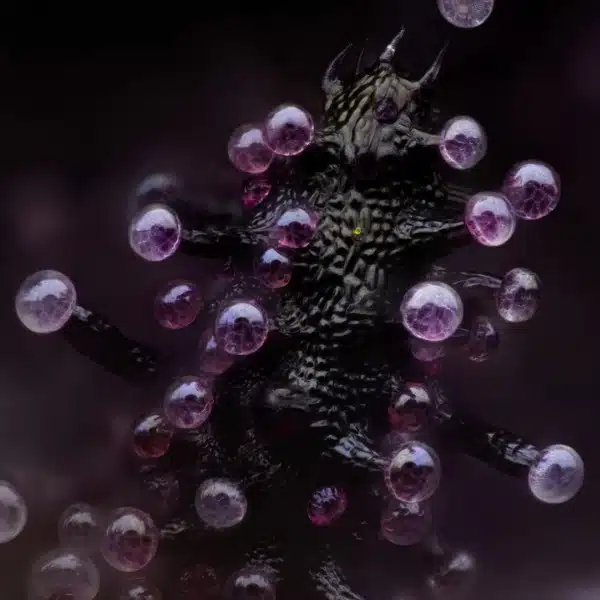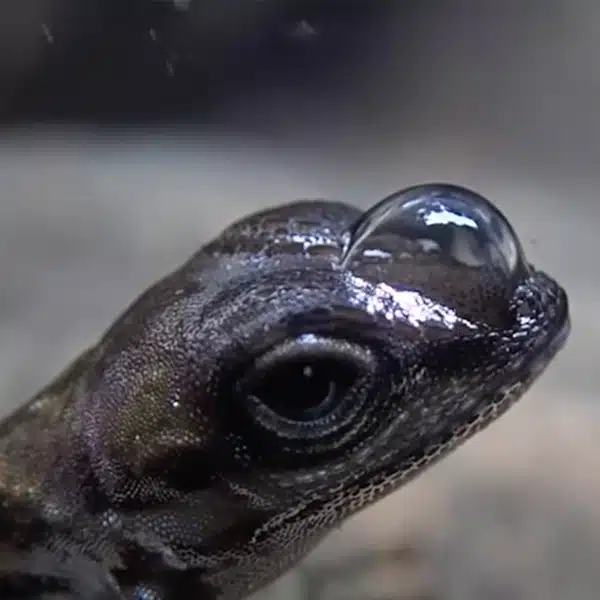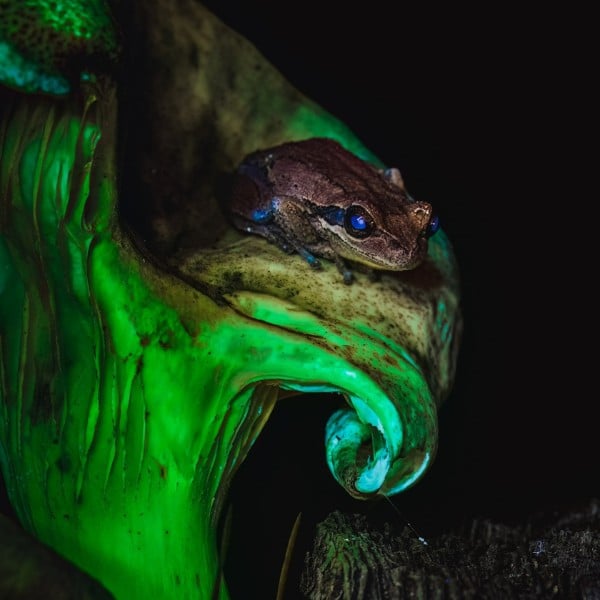
Illustration of a Tasmanian giant crab, Pseudocarcinus gigas. (Photo: John James Wild via Wikimedia Commons, Public domain)
A New Zealand man named Karl Raubenheimer was walking on a beach one day near his home in Taranaki when he spotted something unique. As an amateur fossil hunter, he was drawn to what looked like a giant claw poking out from a rock. After lightly tapping it, he discovered this presumed rock was actually an enormous male crab, perfectly preserved, with an 8-inch pincer. As luck would have it, Raubenheimer repeated his feat a decade later, this time unearthing a fully intact female fossil. Now, his findings have made history. Not only is it the largest fossil crab claw ever found, but it also belongs to a species previously unknown to scientists.
The feat was reported in the New Zealand Journal of Geology and Geophysics, and the new crab species was named Pseudocarcinus karlraubenheimeri in the man's honor. The crab lived about 8.8 million years ago, in the Miocene Epoch, alongside crabs of all sizes. The body of the larger of Raubenheimer’s fossils measured 8 inches across, an impressive size considering that it boasted an 8-inch long claw.
Given its dimensions, scientists are now studying whether the P. karlraubenheimeri could be an ancestor to the Giant Southern crab (Pseudocarcinus gigas), which can weigh over 26 pounds and calls the bottoms in the oceans off Southern Australia home. “The now living Giant Southern crab, Pseudocarcinus gigas, is one of the largest crabs to have ever lived,” study author Barry W.M van Bakel told IFL Science. “Its claw can reach a maximum of 47 centimeters [18.5 inches], nearly half a meter [1.6 feet]! This fossil ancestor is about half the size.”
Like modern-day crabs, it is believed the Pseudocarcinus karlraubenheimeri lived in waters that stretched several hundreds of meters deep. They were also a key element of the food chain. While they may have fed on other crustaceans, clams, and snails, they were a source of food for ancient seals, whales, and dolphins.
As for these particular fossils, the crabs must have met their fate during an eruption of the nearby Mohakatino Volcanic Center, which allowed them to be preserved in such pristine conditions. Now, they may shed light on the evolution of larger crustaceans.
“This is the largest fossil crab to have ever been discovered, which is fascinating,” added van Bakel. “But also, the discovery of its former habitat: sea-floor gas seeps, bringing CO2 and/or methane to the sediment-water interface, provided a warm and nutrient-rich environment rich in clams, snails, and smaller crabs. This formed the food source for these giant crabs! It is great to learn about former ecosystems.”
A New Zealand man named Karl Raubenheimer found the largest fossil crab claw ever seen, which belongs to a species previously unknown to scientists.
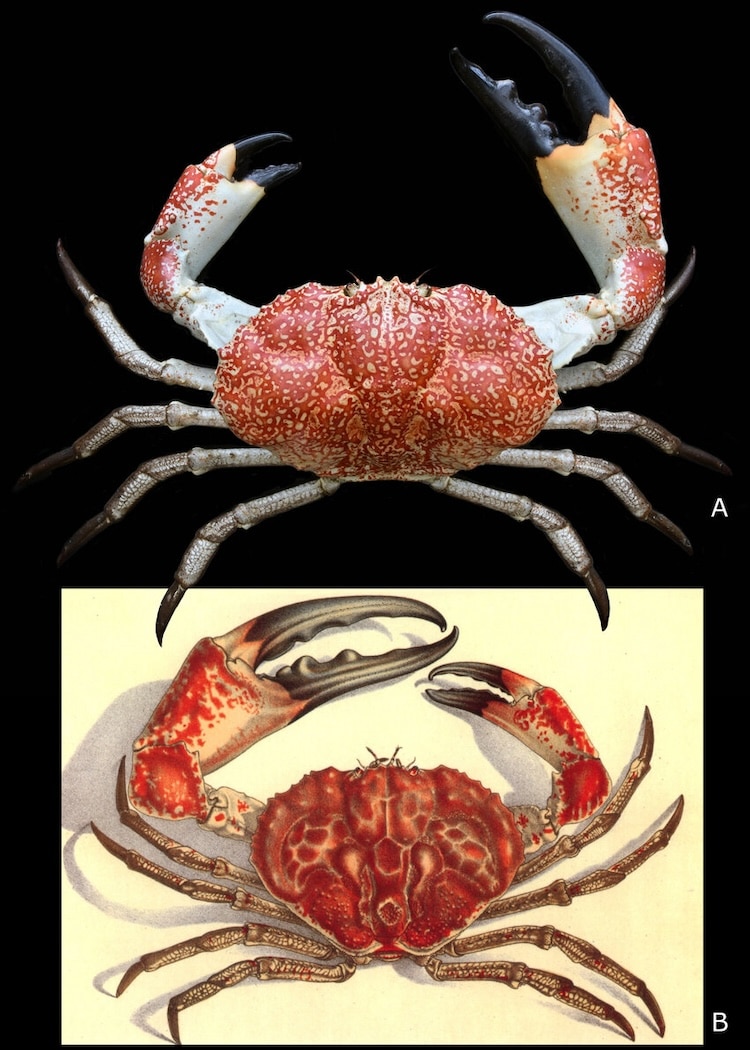
The extant ‘Southern Giant Crab,’ Pseudocarcinus gigas (Lamarck Citation1818). A: dorsal view of male specimen, maximum carapace width 220 mm, maximum major claw length 270 mm (photograph by Ondřej Radosta). B: after McCoy Citation1889, originally drawn by John James Wild, scanned from the reference and kindly provided by P. Davie.(Photo: Barry Van Bakel and Àlex Ossó / New Zealand Journal of Geology and Geophysics, CC BY-NC-ND 4.0 DEED)
The feat was reported in the New Zealand Journal of Geology and Geophysics, and the new crab species was named Pseudocarcinus karlraubenheimeri in the man's honor.
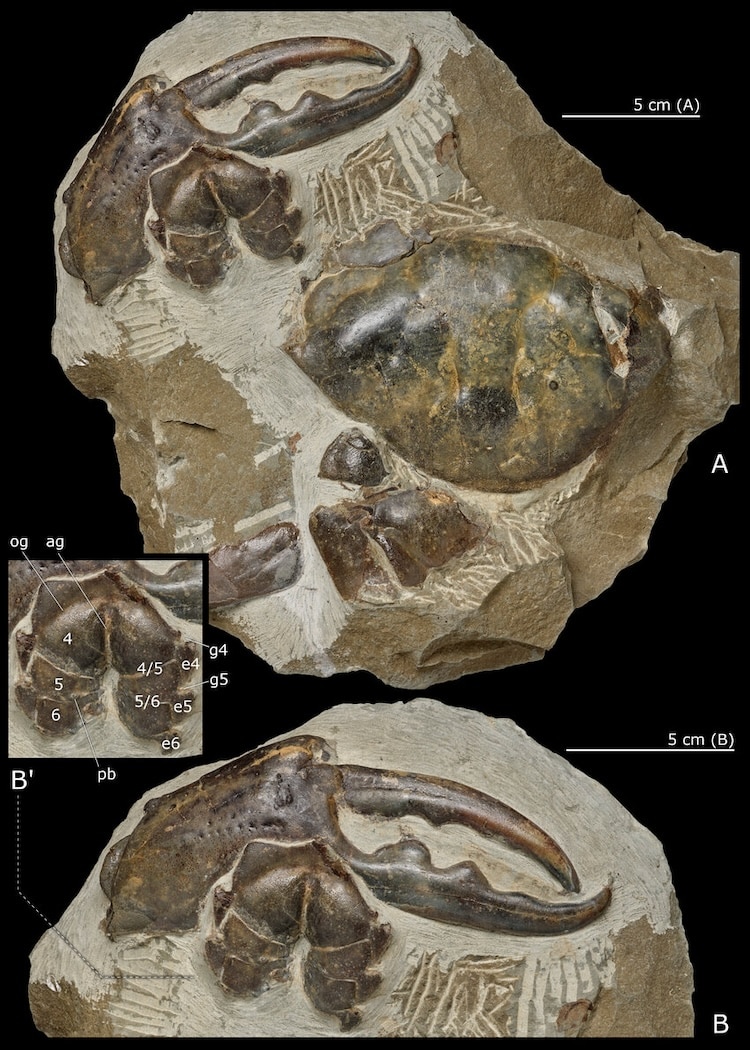
Pseudocarcinus karlraubenheimeri n. sp., A, paratype, NMNZ CR.027703, showing dorsal carapace, with both left (minor) and right (major) chelipeds; arrows indicate larger granules on posterior carapace surface; B, oblique view showing fingers of both chelipeds. Photographs by Jean-Claude Stahl (NMNZ). Scale bars equal 50 mm. (Photo: Barry W. M. van Bakel and Àlex Ossó / New Zealand Journal of Geology and Geophysics, CC BY-NC-ND 4.0 DEED)
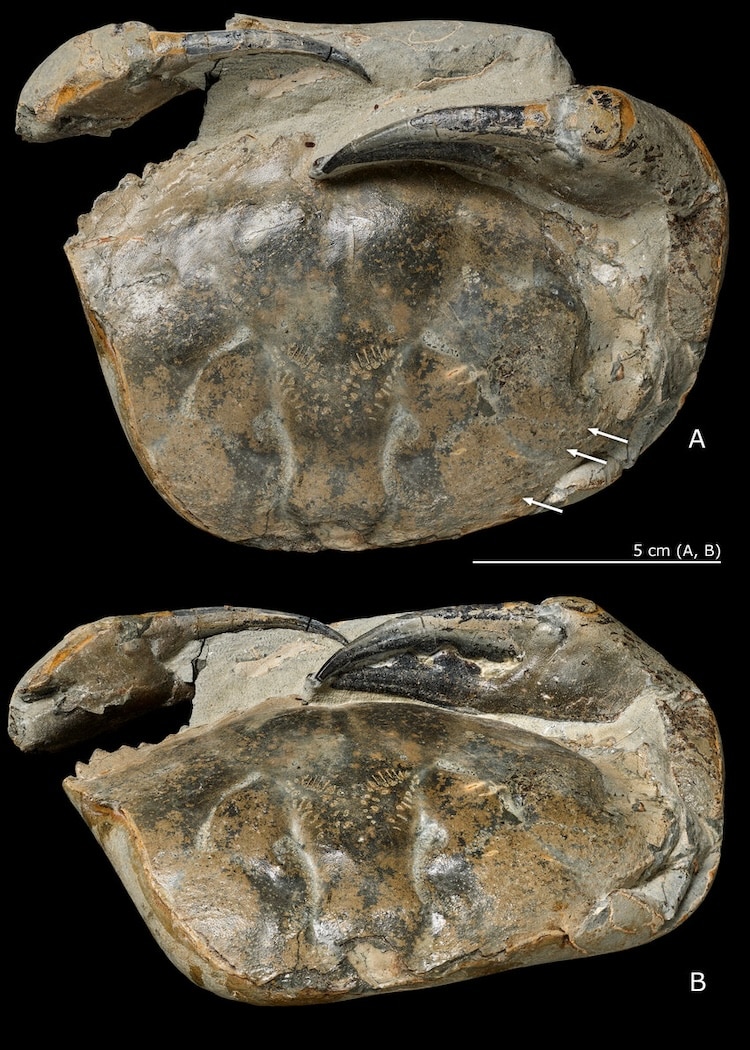
Pseudocarcinus karlraubenheimeri n. sp., A, holotype, NMNZ CR.027704, showing dorsal carapace, thoracic sternum and major right cheliped (male); B, detail of right major cheliped and thoracic sternum; B’, annotated detail of thoracic sternum, abbreviations: 4, 5, 6, thoracic sternites 4, 5 and 6; e4, e5, e6, episternites 4, 5 and 6; g4, g5, gynglyme of thoracic sternites 4 and 5; 4/5, 5/6, thoracic sternal sutures 4/5 and 5/6; ag, axial groove; og, oblique groove; pb, press-button for pleonal holding mechanism. Photographs by Jean-Claude Stahl (NMNZ). Scale bars equal 50 mm. (Photo: Barry W. M. van Bakel and Àlex Ossó / New Zealand Journal of Geology and Geophysics, CC BY-NC-ND 4.0 DEED)
h/t: [Smithsonian Magazine]
Related Articles:
World’s Oldest Piece of Fossilized Skin Is Discovered in Oklahoma Cave
72-Million-Year-Old Fossil of Ancient “Sea Dragon” Discovered in Japan
337-Million-Year-Old Shark Fossils Found at Mammoth Cave National Park
New Dinosaur Fossil Has Shockingly Long Legs That Connect it to Ancient Bird Ancestors
















































































